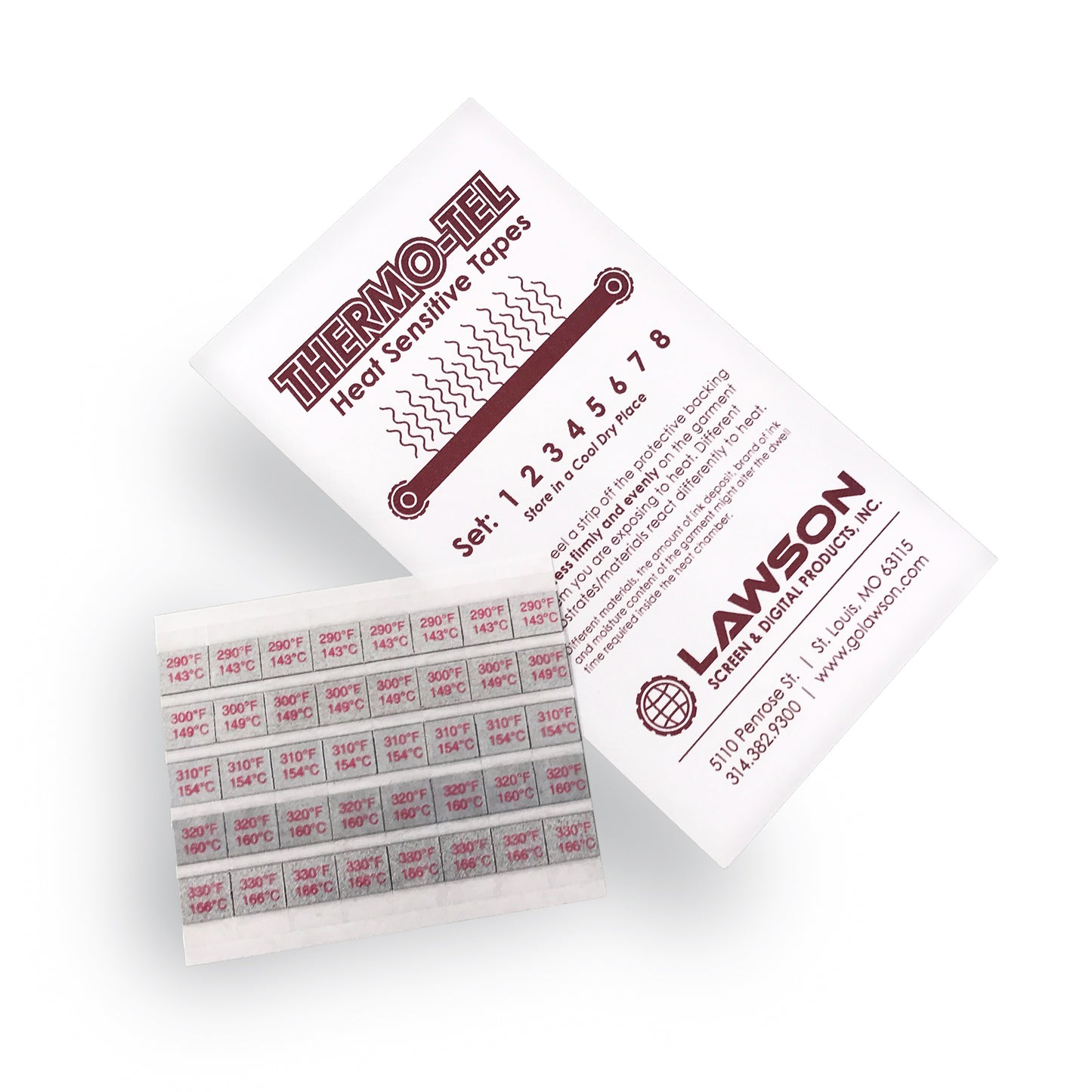Thermo-Tel Heat-Sensitive Tapes
Thermo-Tel Heat-Sensitive Tapes
Couldn't load pickup availability
Payment & Security

Your payment information is processed securely. We do not store credit card details nor have access to your credit card information.

- DESCRIPTION
- REVIEWS
Heat Temperature Strips for Measuring Conveyor Tunnel Dryer Temperature
Thermo-Tel heat-sensitive tapes are ideal for estimating dryer temperatures, with ranges from 100°F to 500°F available in eight different temperature ranges. Each set includes five pressure-sensitive strips. They are easy to use and cost-effective.
400-100-1-PK #1 (100°F–130°F) Minimum order of 24.
400-100-2-PK #2 (140°F–180°F)
400-100-3-PK #3 (190°F–230°F)
400-100-4-PK #4 (240°F–280°F)
400-100-5-PK #5 (290°F–330°F) Most Popular
400-100-6-PK #6 (340°F–380°F)
400-100-7-PK #7 (390°F–435°F)
400-100-8-PK #8 (450°F–500°F)
Instructions for Use:
- Step 1: Peel a strip off the protective backing.
- Step 2: Press firmly to remove any air bubbles from the tape.
- Step 3: Send the strip through your Lawson dryer.
- Step 4: Inspect the strip after it has passed through the dryer for results.
How to Use Thermo-Tel Tapes
Each package contains eight strips with five different temperature indicators (e.g., #5 = 290°F, 300°F, 310°F, 320°F, and 330°F). When exposed to heat, the strip darkens as it reaches each temperature, allowing you to determine the achieved temperature.
Each dryer, job, garment, and shop is unique, so you will need to adjust your dryer accordingly. Belt speed, heater element height, and jet-air flow significantly affect temperature. Always test in conditions that simulate real production. For example, apply the Thermo-Tel strip to the exact garment type you will be printing on (not a rag, belt, or different color) and run the same number of garments or pieces through the heat chamber as you will in production.
- To Use: Peel a strip off the protective backing and press firmly and evenly onto the garment or item being exposed to heat. Different substrates and materials react differently to heat. Factors such as ink deposit amount, ink brand, and garment moisture content may alter the required dwell time inside the heat chamber.

